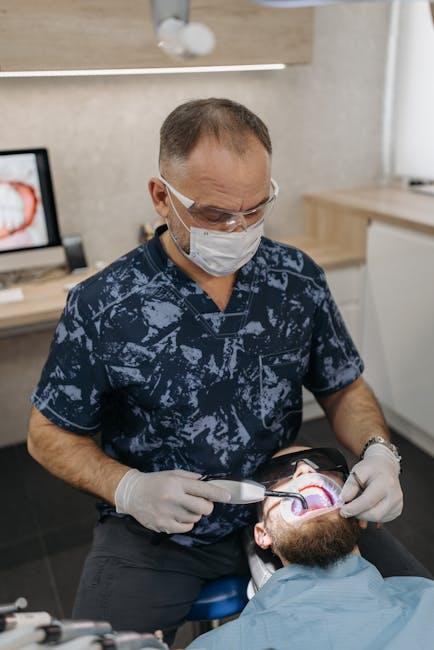
S6 E04: Dental Insurance Explained – American Dental Association
Welcome to Season 6, Episode 4 of our informative series, where we delve deep into the facts and figures surrounding dental insurance. Backed by insights from the American Dental Association (ADA), this article aims to clarify how dental insurance works, its benefits, and offer practical advice to help you maximize your dental health coverage. Whether you are new to dental insurance or looking to optimize your existing plan, this comprehensive guide will walk you through everything you need to know.
What Is Dental Insurance?
Dental insurance is a type of health coverage designed specifically to help offset the costs of dental care services, including routine checkups, cleanings, and more complex procedures such as fillings, root canals, and orthodontics. Unlike medical insurance, dental insurance often works on an annual limit system, focusing primarily on preventive care and basic treatments.
Key Features of Dental Insurance
- Network Providers: Many plans require you to use in-network dentists to receive maximum benefits.
- Annual Maximums: Most plans have an annual payout cap (typically $1,000 – $2,000).
- Co-pays and Deductibles: You usually pay a portion of the cost for services after meeting your deductible.
- Waiting Periods: Some policies include waiting periods before coverage for major procedures begins.
- Coverage Categories: Preventive, basic, and major services are usually tiered with different coverage percentages.
Benefits of Having Dental Insurance
Enrolling in dental insurance can lead to numerous advantages beyond cost savings. Here are some critical benefits:
- Encourages Regular Care: Insurance plans often cover preventive visits 100%, motivating regular dental checkups.
- Reduces Out-of-Pocket Expenses: Coverage on basic and major dental treatments lowers your financial burden.
- Promotes Oral Health: Access to affordable dental care helps detect and prevent expensive dental issues early.
- Peace of Mind: Knowing you have coverage eases stress related to unexpected dental expenses.
Dental Insurance Coverage Table
| Service Type | Typical Coverage | Examples |
|---|---|---|
| Preventive Care | 80-100% | Cleanings, Exams, X-rays |
| Basic Services | 50-80% | Fillings, Root Canals, Scaling |
| Major Services | 30-50% | Crowns, Bridges, Dentures |
| Orthodontic Care | Varies (often limited) | Braces, Aligners |
How Does Dental Insurance Work? Step-by-Step
Understanding the process behind dental insurance helps demystify common frustrations and ensures you get the most from your coverage. Here’s how dental insurance typically works:
- Choose a Plan: Select a dental insurance plan that fits your budget and dental needs—either through your employer, private purchase, or government program.
- Find In-Network Dentists: Using dentists within your plan’s network helps reduce out-of-pocket costs.
- Schedule an Appointment: Go for your dental exams and cleanings regularly to maintain oral health and maximize preventive benefits.
- Submit Claims: The dental office usually files claims to your insurance provider on your behalf.
- Pay Co-Pays or Deductibles: You cover costs like deductibles and any fees above your plan’s coverage limit.
- Monitor Annual Limits: Stay aware of your plan’s maximum benefit limit to avoid surprise expenses late in the year.
Practical Tips to Maximize Dental Insurance Benefits
To get the best value from your dental insurance, consider these expert tips:
- Use Preventive Care: Take advantage of 100% coverage on exams and cleanings to catch issues early.
- Review Your Policy: Understand what treatments are covered and at what percentages before you need major dental work.
- Plan Treatments: Schedule costly procedures strategically if your insurance plan renews annually.
- Ask About Network Dentists: Always confirm your dentist accepts your insurance and is in-network.
- Keep Records: Maintain copies of all dental bills and insurance statements for easy claims tracking.
Common Misconceptions About Dental Insurance
Dental insurance can often be misunderstood. Here are some widespread myths clarified:
- Myth: Dental insurance covers all dental expenses.
Fact: Most plans have coverage limits and exclude cosmetic procedures.
- Myth: I don’t need insurance because I’m healthy.
Fact: Preventive care covered by insurance helps avoid expensive treatments later.
- Myth: Seeing an out-of-network dentist is always covered.
Fact: Out-of-network visits may incur higher out-of-pocket costs or no coverage.
Case Study: How Dental Insurance Helped the Johnson Family
The Johnson family struggled with monthly dental expenses until they enrolled in a dental insurance plan through an employer-sponsored benefit. Here’s what happened:
- Before Insurance: Paying $1,500 annually out-of-pocket for cleanings and emergency fillings.
- After Insurance: With a $1,500 annual maximum, preventive visits were free, and basic treatments were 70% covered.
- Results: The family stayed on top of their dental health and saved nearly $800 during their first insurance year.
This case clearly shows the importance of having dental insurance as a financial safety net that also supports proactive oral care.
Frequently Asked Questions (FAQs)
Does dental insurance cover cosmetic procedures?
Generally, cosmetic dental treatments such as teeth whitening or veneers are not covered by standard dental insurance plans. However, some specialized plans may offer limited coverage.
How much does dental insurance cost?
Costs vary based on plan type, provider, location, and coverage level, but typical premiums range from $20 to $50 per month for individual plans.
Can I use dental insurance with any dentist?
You can visit any dentist, but using an in-network provider usually offers the best coverage and reduces out-of-pocket costs.
Conclusion
Dental insurance plays a crucial role in making dental care more affordable and promoting lifelong oral health. Through better understanding of how dental insurance works—its benefits, terminology, and common pitfalls—you can optimize your coverage and avoid costly surprises. The American Dental Association’s guidelines and recommendations empower you to take the best possible care of your teeth while managing expenses effectively.
If you haven’t yet considered dental insurance, now is a great time to explore the options available to you and your family. Remember, prevention is the best investment not only for your smile but also for your wallet.


